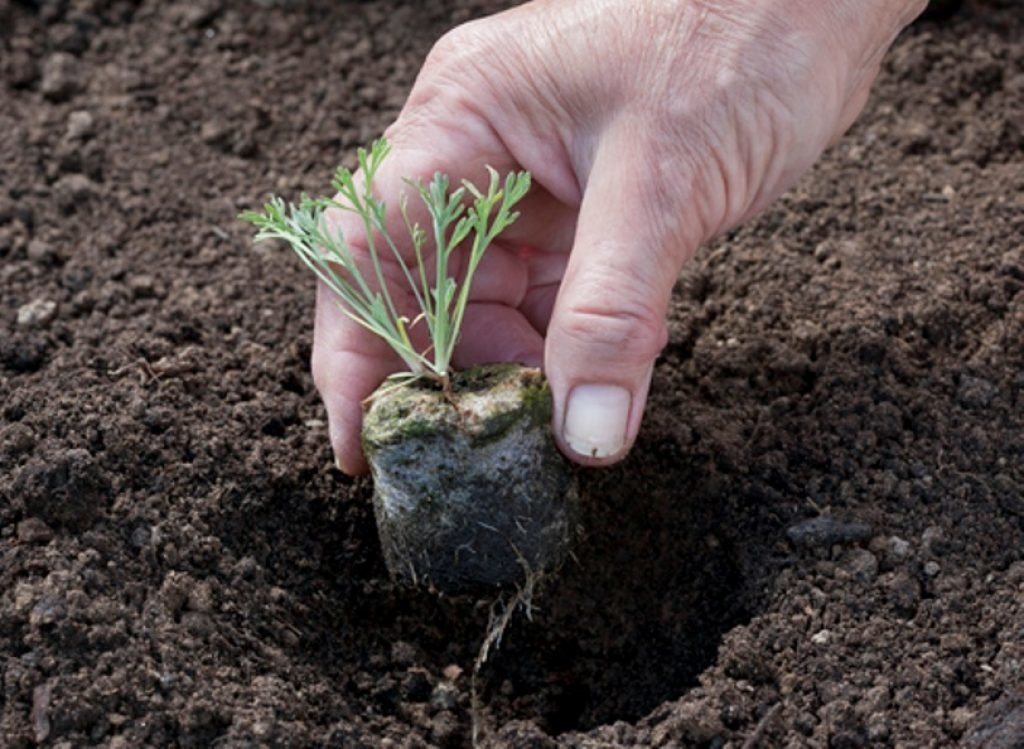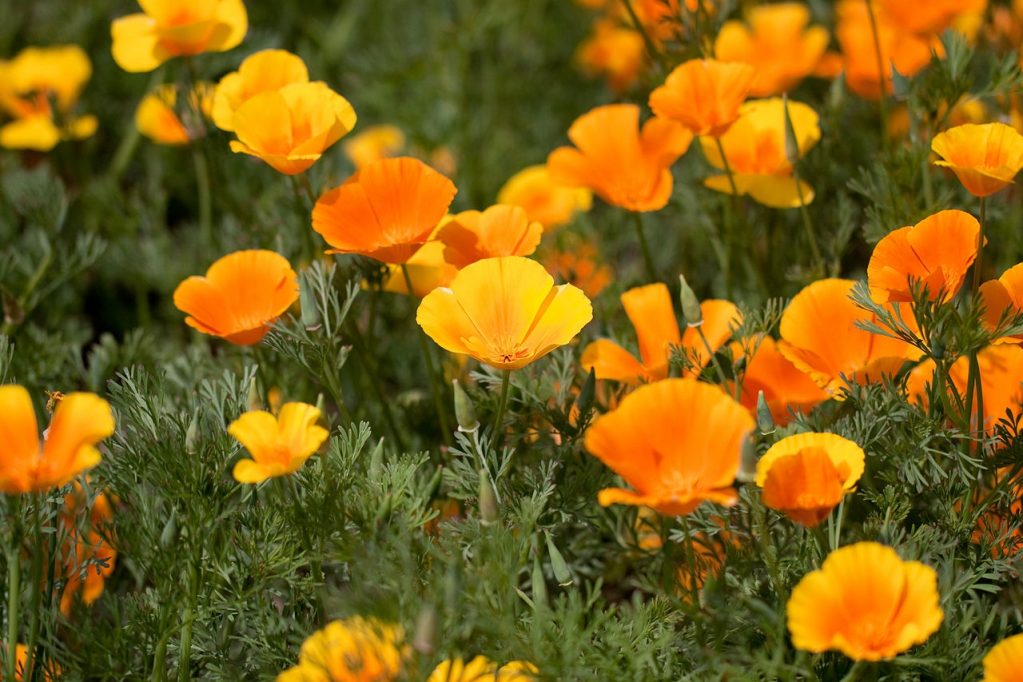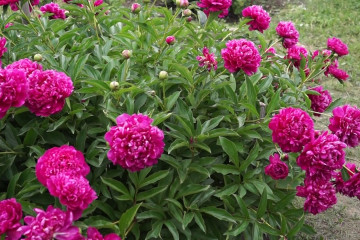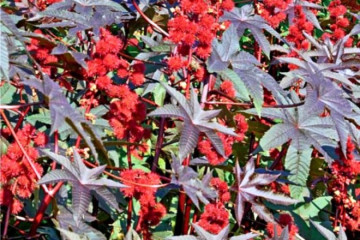Eschscholzia flowers - planting and care in the garden
Content:
When Escholzia blooms, it seems that hundreds of butterflies with fluttering wings are sitting on the flower bed. The original color of the petals of the Californian poppy as a ray of the sun enlivens the flower garden, its bluish openwork foliage goes well with other plants.
What does Eschscholzia or California poppy look like?
Escholzia is a popular ornamental plant that attracts gardeners with its original petal color, flowering duration, and extreme ease of care.
What family does it belong to
Escholzia - flowers belonging to the poppy family. About 10 plant species are known. The most popular was Eschscholzia Callifornica, on the basis of which the most famous varieties were bred.
Briefly about the history of appearance
In the wild, perennial escholzia grows in North America. The flower got its name in honor of the Russian naturalist Johann von Eschsholz. The scientist took part in the expedition of 1816, directed to the American continent. The plant was found on the shores of California. A little later, the seeds were brought to Europe, when Russian gardeners mastered the technology of growing a flower in new conditions.
Plant characteristics
Escholzia is a herbaceous shrub with a height of 15-40 cm, grown in our climate as an annual. This is due to the low winter hardiness of the Californian poppy, its ability to bloom most profusely in the first year of life. The plant has erect thin stems, openwork gray-green foliage, covered with a wax coating. Escholzia flowers are single, not collected in inflorescences, have a pleasant aroma. They can be simple or terry, they resemble a bowl in shape. Delicate petals, depending on the variety, are colored white, yellow, orange or red. The buds are cone-shaped.
Classification of types of escholtia
A brief description of the species used in ornamental floriculture is presented below.
Lobba (Eschscholzia Lobbi)
Small compact bush up to 15 cm high with feathery foliage, pointed at the edges. Small yellow flowers interspersed with orange have a diameter of 20 mm.
Soddy (Eschscholzia caepitosa)
Graceful plant 15-20 cm tall. The leaves are gray-colored, covered with a waxy coating, forming a dense basal rosette. Flowers of a bright yellow tone, no more than 2-3 cm in diameter. The flowering period of soddy escholzia is June-October.
California (Eschscholzia californica)
The species reaches a height of 30-40 cm, has erect ribbed thin stems, strongly dissected gray-green leaves. Flowers with a diameter of 6-8 cm have a variety of colors. The plant is characterized by long and abundant flowering.
The cultivars that are most popular with horticulturists
Through the efforts of modern breeding, many varieties have been bred with double and semi-double flowers, two-color petals.
Apple blossom
Densely double grade Escholzia with large, corrugated at the edges of the petals of a white-pink hue, reminiscent of the color of apple blossoms.
Chiffon
Mix with a varied color of double flowers 3-4 cm in size with velvety corrugated petals. There are buds colored in several shades.
Ballerina Mix
A variety with simple and double large flowers, 4-6 cm in diameter, pink and yellow-orange in color.
Mikado
Bush 30 cm high. Flowers are simple, 6-8 cm in size, yellow with an orange center.
Peach sorbet
A highly decorative variety of terry escholzia in a soft cream shade with petals collected in a flat bowl.
Strawberry fields
A plant with green openwork foliage. Semi-double flowers of a dense red tone have a yellow spot in the center.
How escholzia reproduces
The plant is bred exclusively by seed, vegetative reproduction methods are not suitable for the California poppy. It is enough to grow an escholtia from seeds once, in the future it reproduces well by self-seeding.
Growing from seeds
Many lovers are interested in how to grow escholzia from seeds, the timing of when to plant a flower for seedlings. The plant can be propagated by direct sowing in the ground in autumn or spring. Growing seedlings in seedlings produces stronger, early flowering plants.
Time to board
Often the following question comes from beginners about such a flower as escholzia: when is planting in open ground most preferable? When sowing in autumn (in mid-October), the seeds are mulched with a layer of peat after planting. In winter, they undergo natural stratification. Sowing in the fall is an easier way of reproduction, but a significant part of the planting material may not emerge.
Before planting in the spring directly on the beds, the seeds of Echscholzia should be kept wet in the basement or lower compartment of the refrigerator for at least a month at t 0 ... + 5 °. Sowing is carried out as early as possible, since the plant is not afraid of cold weather. Seeds are sealed shallowly, sprinkled with loose soil on top.
Capacity selection
Planted at home with seeds, Escholzia is a seedling, the cultivation of which is difficult because the plant does not tolerate transplanting well.
To solve the problem, each seed is placed in a separate small pot or peat tablets are used, which are soaked and inserted into plastic containers. Be sure to make drainage holes.
Soil and seed preparation
Californian poppy seeds can be purchased at any specialty store, or harvested from plants yourself. Their planting material is removed from the pod, freed from the pulp, dried, disinfected in a solution of potassium permanganate.
To grow Eshcholzia through seedlings, take a mixture of low-lying peat and coarse sand in a ratio of 3: 1. Before use, the substrate is spilled with boiling water or treated with "Fitosporin".
Seedling care
Crops are placed in a bright place with an air temperature of + 21 ... + 25˚С. The first shoots appear in two weeks. Young shoots require a lot of light. To prevent the seedlings from stretching, the plantings are supplemented with phytolamps. Seedlings are watered moderately, avoiding stagnation of water and excess air humidity.
Pick and transfer
Planting each seed in a separate container excludes the picking process, from which the fragile root system of the flower suffers greatly. In open ground, the seedlings of Echscholzia are planted at the age of 30-45 days at an air temperature of 18-22˚ by carefully transferring the plant to the planting hole. When growing seedlings in peat tablets, they are planted directly in them.
Features of care in the garden
The California poppy is an unpretentious and hardy plant. Any novice gardener can handle planting and caring for escholzia.
What conditions do escholtsia like
The flower prefers to grow in well-lit places with light, loose sandy and sandy loam soils. The optimum acidity of the soil for escholzia is 6.2-7.
What is the plant afraid of
Bushes develop poorly when planted in lowlands, on heavy clay soils, where water stagnates in spring and in rainy weather.
Watering
The core root system of the Escholzia is capable of receiving moisture from the deep layers of the soil. Most of the year, the plant has enough water from precipitation. The flower is watered during periods of prolonged drought, trying to direct the stream under the root, without wetting the leaves. Waterlogging is more detrimental to escholzia than lack of moisture.
Mulching
The introduction of mulch has a beneficial effect on the development of the plant. The soil near the flower can be loosened and weeded less often. Mulching serves as an additional source of nutrients.
Loosening
Weeds and loosening should be done very carefully. Escholzia has a fragile root system that is easy to disturb. Careless handling can lead to the death of the flower.
Top dressing
When planted in fertile soil, escholzia will bloom all season even without top dressing. The plant can be supported by fertilizing twice during the growing season:
- feeding with complex mineral fertilizer - during the budding period;
- watering with water and fertilizer one month after the beginning of flowering at half concentration.
Top dressing is applied in a diluted form. Before fertilizing, the plant is watered.
Transfer
Many are interested in the question: is it possible to transplant escholzia bushes. The flower is extremely difficult to transfer. In most cases, the plant dies. Surviving bushes take a long time to take root in a new place.
When and how it blooms
A characteristic feature of the plant is that the flowers fold into cone-shaped buds in rainy and cloudy weather, with the onset of dusk. The life of each flower is short-lived: only 3-4 days. The plant has a great potential for bud formation; instead of withered flowers, new ones constantly open up.
Types of flowers
The most common escholzia with simple flowers having 4-5 petals. There are also modern varieties with semi-double and double, corrugated petals.
Flower shapes
Single flowers are cup-shaped or goblet-shaped. Orange-yellow pistil and stamens are shorter than petals. There are terry varieties with flattened flowers, similar to blossoming roses or camellias.
Flowering period
The California poppy is a plant that blooms throughout the growing season. Most varieties open their first buds in late May and early June and continue to bloom continuously until the onset of cold weather.
Changes in care during flowering
To form a large number of buds, do not allow the escholtia to tie seed pods that look like a pod. Timely removal of the ovaries will promote lush flowering for a long time.
Possible growing problems
The flower is highly immune to many viral fungal diseases. Why do Escholzia leaves sometimes start to turn yellow? The reason may be bacterial pathologies, pests and violations of the rules of agricultural cultivation.
Pests
In hot weather, bean aphids appear on the thin stems of the plant. The pest is fought by spraying with the Komandor preparation. The presence of a thin web on the bush indicates the defeat of the escholzia by a small parasite - a spider mite. Then the flower is sprayed with Actellik insecticide.
Diseases
In cool rainy weather, the plant can get sick with powdery mildew.The damaged parts of the bush are cut off, the flower is treated with a soap-copper solution: 200 g of green soap, 20 g of copper sulfate per bucket of water.
Signs of improper care
In conditions of excessive moisture, Echscholzia suffers from rotting of the root system. Mold and dark spots appear on the leaves.
Use in landscape design
The bright color of the petals, the original openwork foliage, the long flowering period and the outstanding drought resistance have led to the widespread use of escholzia in the preparation of flower arrangements.
The plant is used for decoration:
- mixborders,
- rockeries;
- alpine slides;
- gardens of stones.
Escholzia is planted in combination with other low-growing plants: purslane, lobelia. Combines well with dwarf perennials: forget-me-nots, primroses, carnations. The bright flower looks great among the grasses in the "Moorish lawn".
Any part of the garden will be decorated with a beautiful Escholzia flower, the cultivation and maintenance of which is not difficult. The plant reproduces easily: it is enough to sow the Californian poppy once to admire its cheerful flowering for many years.























